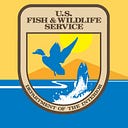Cutest Baby Animals at National Wildlife Refuges
Thank a mom for these amazing little ones
In honor of mothers everywhere, we’ve pulled together some of the cutest offspring we could find. Just try not to smile as these cute creatures keep generations of wildlife moving forward at national wildlife refuges. One main purpose of refuges, after all, is to provide places for baby animals to thrive. All featured animals are brought to you by their moms.
Black-Footed Ferret
Few images melt hearts like those of baby animals. I mean, who doesn’t want to cuddle with these newborns at national wildlife refuges? These baby black-footed ferrets came into the world with a little help from a breeding program at the National Black-Footed Ferret Conservation Center in Colorado. The center, run by the U.S. Fish and Wildlife Service and many partners, plays a key part in helping this endangered species survive. Black-footed ferret kits are born blind and helpless. For the first few months of life, they depend heavily on their mamas for their food and safety.
Harbor Seal
This angelic harbor seal pup is just the most adorable blob sleeping on the Oregon coast. Pupping season is in full swing in spring and summer along the rocks and reefs of Oregon Islands National Wildlife Refuge. Harbor seal moms quickly learn their babies’ calls and smells. That info could come in handy if they ever get separated.
Red-Footed Booby
This puffball of a red-footed booby chick looks like it’s made of a tiny cloud. The red-footed booby is the smallest of all the booby family members. Soon this little chick will fledge and explore the waters and lands of Johnston Atoll National Wildlife Refuge in the Pacific.
Loggerhead Turtle
“The water is that way,” the baby loggerhead turtle seems to be saying. This threatened species is named for its large and distinctively shaped head. The beaches of Cape Romain National Wildlife Refuge in South Carolina are critical sea turtle habitat. Beaches are carefully monitored and managed in summer, promoting healthy cuties like the one above to swim our waters.
Florida Panther
These triplets look so purrfect waiting in their den for mommy to come back. Florida panther kittens are born with blue eyes and spots that fade as they reach about six months. Kittens remain with their mamas until they are two years old. The Service and partners are working to help better the odds that these endangered kittens will grow into adult panthers.
Paddlefish
You’re so squishy! A baby spoonbill like this one will soon grow a large paddle-like snout. Young American paddlefish can grow about an inch a week, reaching up to 10 feet long. In and around Caddo Lake National Wildlife Refuge in Texas, the Service and its partners in the Big Cypress Bayou American Paddlefish Restoration Project work to improve fish passage for this freshwater species.
Great Egret
These great egret chicks are participating in snack time! This nest is perched high above the waters of Harris Neck National Wildlife Refuge near the Georgia coast. Mom and dad take turns incubating and protecting these siblings. Chicks begin to fly six weeks after hatching. They are so fluffy!
Wolf Spider
“Mom, can we catch a ride?” you can almost imagine all the baby wolf spiders (the orange dots) pleading. Baby wolf spider eggs are wrapped in silk and carried under mom. Once the eggs hatch, baby spiders hitch a ride on mom’s back, where they stay until they get big. These tiny nocturnal creatures crawl rapidly through varied habitat, chasing their prey. No worries though. These cute spiders are actually quite shy and rarely bite.
Bison
Like bison, like calf. Bison calves are born around spring, emerging with a pale red fur coat. Their fur turns darker as they get older. This cuddly bison is well protected by its momma at Neal Smith National Wildlife Refuge in Iowa. Mom will use her strength, horns and size to protect her baby.
Crayfish
This teeny tiny crayfish at Windom Wetland Management District in Minnesota is clawing its way to your heart. Baby crayfish stick to their moms for many weeks. That’s a lot of sticking. Anywhere from 80 to 575 babies can be nestled under mamma crayfishes’ swimmerets, the appendages on the abdomen.
Time to reflect on the animal mothers we’re grateful for.
Compiled by Ashley Suarez-Burgos, May 9, 2018
